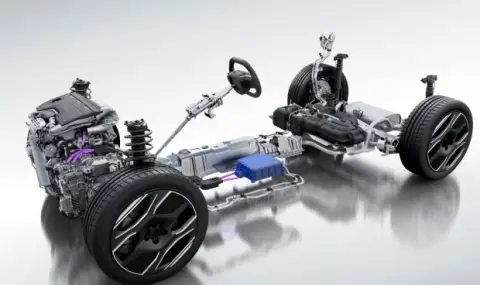The growing popularity of hybrid powertrains amid declining electric car sales is forcing automakers to rethink their production plans. Thus, the multinational concern Stellantis plans to expand its range of hybrids to 30 this year, and by 2026 to present six more new products.
The euphoria surrounding the mass transition to electric traction is over, the market is saturated with “battery“ cars, and consumers are increasingly thinking about returning to using cars with internal combustion engines. This is quite understandable, because despite all the efforts of manufacturers and legislators, it is impossible to change the laws of physics, and charging the battery, as before, requires a lot of time and causes many problems.
In general, no one would ever undertake this "electrification" if they were not forced to do so by strong legislative initiatives in the field of ecology. Therefore, in order to "catch fish without getting wet", car manufacturers found a compromise in the form of a new fetish - hybrids.
From Stellantis have calculated that since the beginning of this year, sales of hybrid models of the concern in 30 European countries have increased by 41% compared to the same period last year. In addition, analysts expect a further increase in sales. Therefore, the concern intends to further develop the range of products with hybrid power units. By the end of the year, the number of hybrid models is planned to increase to 30, and by 2026 six more new products will be offered.
This year, the concern will offer buyers hybrid versions of the following models: Alfa Romeo Junior and Tonale, Citroen C3, C3 AirCross, C4, C4X, C5 AirCross and C5X, DS 3 and DS 4, Fiat Panda and 600, Jeep Avenger , Renega Lancia Ypsilon, Maserati Grecale, Opel/Vauxhall Corsa, Astra, Astra Sports Tourer, Mokka, Frontera and Grandland, as well as Peugeot 208, 308, 308 SW, 408, 2008, 3008 and 5008.
Most Stellantis hybrid models are equipped with an electrified dual-clutch transmission (eDCT) and a 21 kW/29 hp electric motor. The energy is stored in a battery with a voltage of 48 V and a capacity of 0.9 kWh, which allows you to travel up to 1 km on electricity. “The soft“ hybrid system uses regenerative braking and coasting to reduce fuel consumption and emissions by up to 20%, depending on the model.
